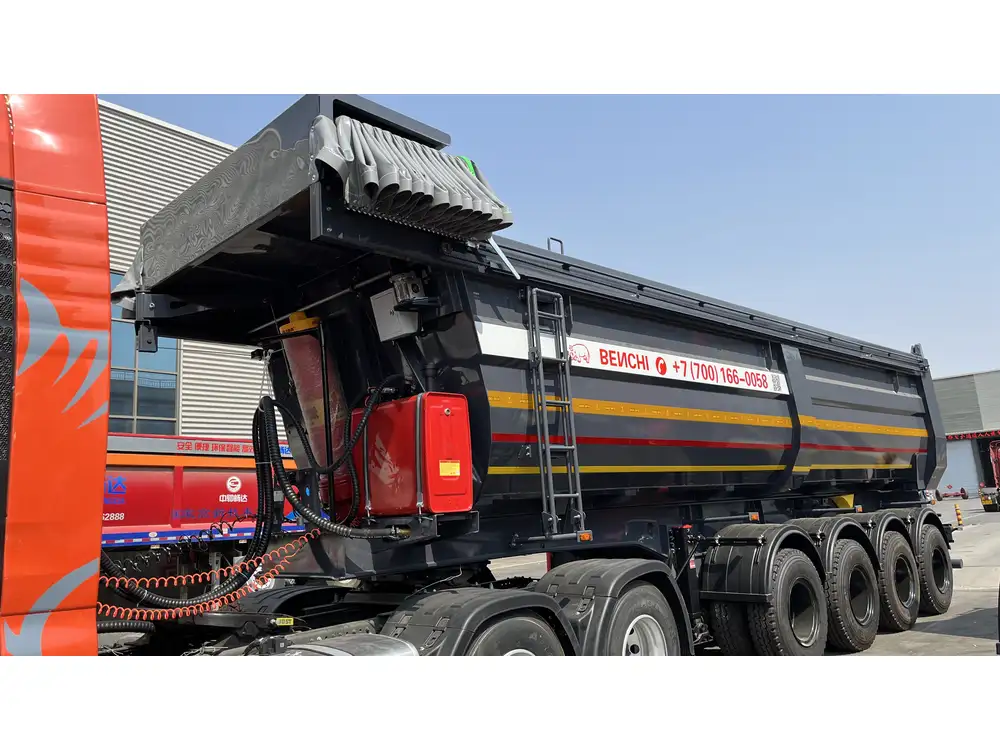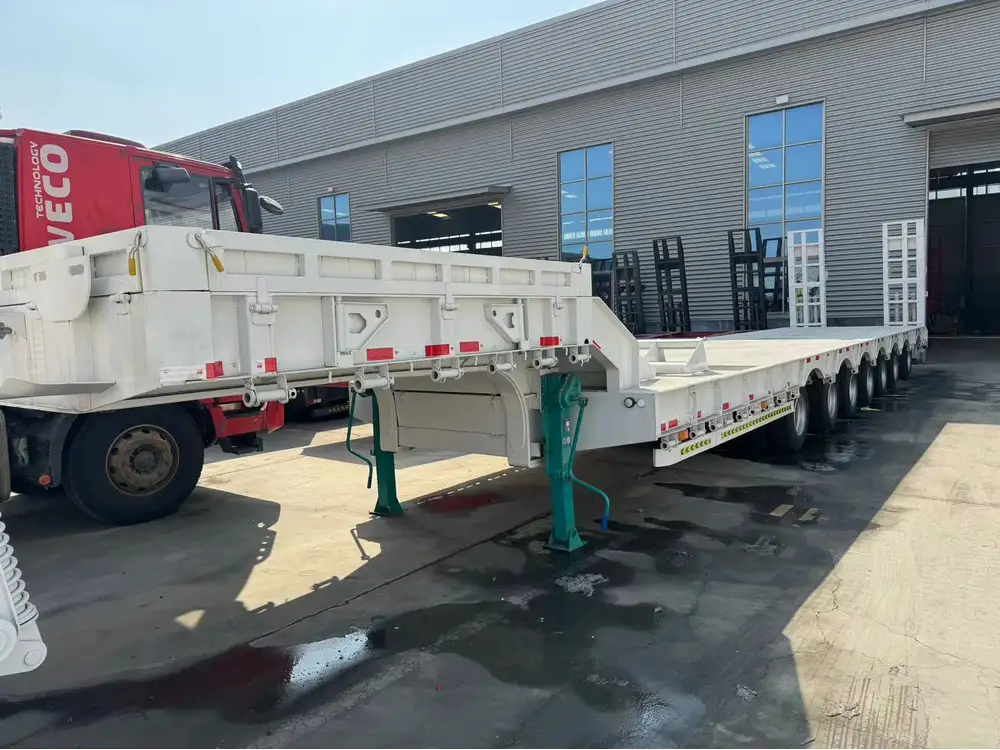The semi-trailer truck, a pivotal component of modern logistics and transportation, has a rich history that dates back to over a century ago. This article delves deeply into its invention, tracing the journey from early concepts to the sophisticated vehicles we see on the roads today. By exploring the timeline and the mindsets that drove innovation, we aim to highlight the significant milestones that led to the creation of the semi-trailer truck.
The Roots of Trucking: Early Developments
Understanding Early Freight Transport
Before diving into the invention of the semi-trailer, it’s crucial to understand the transportation landscape in the late 19th century. The Industrial Revolution spurred significant changes in manufacturing, leading to increased demand for efficient freight transport. Traditional horse-drawn wagons and carriages, though functional, fell short when it came to meeting the burgeoning economic needs.
| Year | Development | Description |
|---|---|---|
| 1790 | Steam Engine | Introduction of the steam engine, paving the way for mechanized transport. |
| 1825 | First Public Railway | The opening of the Stockton and Darlington Railway significantly influenced freight movement. |
| 1879 | First Motorized Vehicle | Gottlieb Daimler’s engine marks the advent of motorized transport, a precursor to modern trucks. |

The Concept of Trailers
Even before the semi-trailer truck was conceived, the idea of using trailers to assist in transporting goods was in circulation. Early iterations of trailers were simple platforms pulled by horse-drawn vehicles. The transition from horses to motorized vehicles was gradual but laid essential groundwork for what would follow.
The Birth of the Semi-Trailer
The Pioneering Innovations
The semi-trailer truck as we know it began to take shape in the early 20th century. Here’s an incisive look at the timeline for pivotal milestones.
| Year | Innovator | Contribution |
|---|---|---|
| 1914 | Earle E. Marsh | Patents an early version of the semi-trailer design in 1914. |
| 1916 | Fruehauf Trailer Company | Introduces the first true semi-trailer specifically designed to be towed by a truck. |
| 1920s | Standardization | The design of the semi-trailer becomes standardized, allowing for mass production and widespread adoption. |

The Functional Design
The semi-trailer truck features a unique coupling system that allows it to carry more cargo while remaining highly maneuverable. Unlike full trailers, which rely on a front axle and can be difficult to maneuver, a semi-trailer uses a sliding fifth wheel that allows for a more efficient weight distribution. This design not only enhances the capacity but also improves safety and stability on roads.
The Adoption and Evolution of Semi-Trailer Trucks
World War II and the Economic Boom
Post World War II, the economy experienced a significant boom, leading to an increase in consumer goods demand. The semi-trailer truck became the backbone of freight movement in the United States, symbolizing the shift from rail to road transport.
- Expansion of Highway Systems: The Federal-Aid Highway Act of 1956 resulted in the development of interstate highways, making long-haul trucking more viable and efficient.
- Technological Advancements: The introduction of better engine technology and materials led to more powerful and durable semi-trailer trucks.

Semi-Trailer Types and Their Purposes
The versatility of semi-trailer trucks is evident in the variety of models designed for specific freight hauling needs. Here’s a breakdown of the most common types and their applications.
| Type of Semi-Trailer | Description | Primary Use |
|---|---|---|
| Van Trailers | Enclosed trailers protecting cargo from elements. | General freight, dry goods. |
| Flatbed Trailers | Open trailers allowing easy loading and unloading. | Building materials, heavy machinery. |
| Refrigerated Trailers | Insulated and temperature-controlled environments. | Perishable goods, pharmaceuticals. |
| Tanker Trailers | Cylindrical tanks for liquid transport. | Fuel, chemicals, food products. |
Impact on Society and Economy
The invention and evolution of semi-trailer trucks revolutionized freight transportation. They not only improved logistics efficiency but also played a crucial role in shaping the modern economy. The ability to transport goods quickly across vast distances fostered national and international trade.
Economic Contributions
- Job Creation: The trucking industry has created millions of jobs in various sectors including driving, logistics, maintenance, and management.
- Globalization: Enhanced freight capabilities facilitated global supply chains, allowing for international trade and commerce.

Infrastructure Development
The need for efficient transport spurred significant infrastructure development, including the building of highways, weight stations, and logistics centers, ultimately shaping modern highway networks.
The Future of Semi-Trailer Trucks
Innovations in Technology
As we move into the future, semi-trailer trucks continue to evolve with advancements in technology. Key trends include:
- Electric and Autonomous Trucks: As the world shifts towards sustainability, electric semi-trailer trucks are emerging, and autonomous driving technology promises to enhance the efficiency and safety of freight transport.
- Telematics Systems: Integration of IoT and data analytics allow for better fleet management and optimization, reducing operational costs and enhancing efficiency.

Challenges and Considerations
While the future appears promising, several challenges must be addressed:
- Regulatory Framework: Regulatory practices must evolve to keep pace with technological innovations, ensuring safety and compliance.
- Driver Shortage: The industry faces a consistent shortage of qualified drivers, necessitating initiatives to attract and retain a new workforce.
Conclusion: The Semi-Trailer Truck Legacy
From its humble beginnings in the early 20th century to its status as an indispensable asset in global trade, the invention of the semi-trailer truck marks a milestone in transportation history. This evolution reflects our ongoing quest for efficiency and reliability in freight movement. Today’s semi-trailer trucks epitomize innovation and adaptability, continuing to shape the world of logistics and commerce in remarkable ways.
In sum, understanding when the semi-trailer truck was invented is not just about pinpointing a date but recognizing the significance it holds in modern society and its future trajectory. As developers and manufacturers of semi-trailers, we must navigate these changes while honoring the transformative legacy that has brought us here today.



